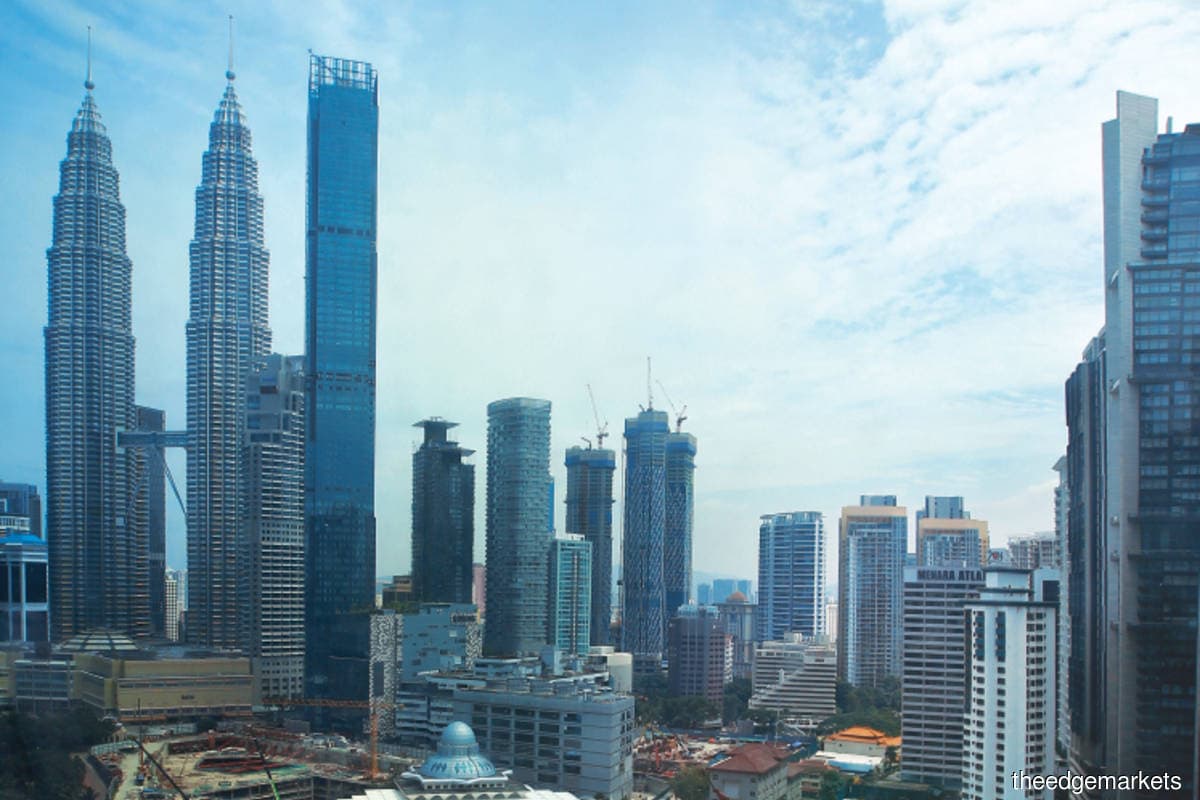
KUALA LUMPUR (June 22): S&P Global Ratings today affirmed its "A-" long-term and "A-2" short-term sovereign credit ratings on Malaysia, besides also affirming its 'A' long-term and 'A-1' short-term local currency ratings on the country.
"The outlook on the long-term ratings remains negative," the ratings agency said in a statement.
S&P also lowered its real gross domestic product (GDP) forecast for Malaysia to 4.1% from 6.2%, to account for the impact of the tightening of the Movement Control Order (MCO) since June 1.
It said the affirmed ratings reflect Malaysia’s strong external position, monetary policy flexibility and record of supporting sustainable economic growth, although it said the nation’s elevated government debt stock and evolving fiscal policy settings temper these strengths.
“The negative outlook reflects enduring pressures on Malaysia's fiscal and debt settings, which have been further undermined by a worsening domestic Covid-19 situation this year.
“Higher fiscal deficits in 2020 and this year, alongside a more muted near-term economic recovery, will keep the Malaysian government's net indebtedness close to 70% of GDP. Heightened political uncertainty compounds the challenges that the government will face in rapidly consolidating its finances over the next two to three years,” S&P said.
It added that Malaysia’s ratings could face downward pressure over the next 12 to 24 months, if economic growth suffers a deeper or more prolonged downturn than expected, or if a weaker commitment to fiscal consolidation is evident, as both these situations could result in the faster accumulation of net general government debt.
This deterioration could be indicated by a change in net general government debt surpassing 4% on a sustained basis, net indebtedness surpassing 80% of GDP, or interest paid by the general government exceeding 15% of revenue.
S&P said the downward ratings pressure could also build if political stability in Malaysia deteriorates such that policymaking becomes materially less predictable, or if the country’s external position weakens such that the economy’s gross external financing needs surpass its current account receipts plus usable reserves.
S&P said it may revise the outlook to stable over the next 12 to 24 months if the Malaysian economy grows considerably faster than forecasted, or the policy environment becomes more conducive to credible fiscal consolidation.
This, it said, would produce a stronger fiscal performance than expected, leading to a quicker stabilisation of government finances
On the reduction in its GDP growth forecast for Malaysia, the ratings agency said it expects the majority impact of the tightened MCO to economic activity to be felt in the second quarter of 2021.
“The recovery will likely be gradual in the third quarter, owing to the cautious reopening that the government has indicated. Critically, some economic sectors are allowed to operate with strict safety procedures, subject to approval under a positive listing process. As such, activity will not be affected to the same extent as during the first MCO in the second quarter of 2020,” it said.
S&P expects Malaysia’s economic recovery to gain pace as the national vaccination plan progresses, and targets are met for a border reopening of activities, including the targeted decline in positive cases to less than 4,000 per day, improvement in the capacity utilisation of key healthcare infrastructure, and 10% inoculation of the population.
It noted that the Malaysian economy has a record of resilience following periods of adversity, adding that the manufacturing sector is well-oriented to take advantage of a global surge in demand for electronics.
“Malaysia has a mature electrical and electronics sector that supplies components and finished products to major global players. We expect this sector to drive strong exports over the next one to two years, in particular,” said the agency.
Malaysia’s economy is likely to grow at an above-trend rate in 2022 and 2023, it said, before settling toward a more sustainable long-term rate of expansion, in line with its historical performance.
S&P expects Malaysia’s GDP per capita to be about US$11,000 by end-2021, which is lower than most peers in the same rating category but notably higher than most of its Southeast Asian neighbours, except Singapore and Brunei.
Meanwhile, it said Malaysian institutions’ depth of capacity alleviates the risk of instability, amid ongoing political developments.
“Notably, the government proactively introduced stimulus measures aimed at supporting the economy, as the pandemic worsened in 2020. However, Malaysia's Covid-19 situation has worsened considerably this year, and the government is facing pressure from various constituencies, including some within the PN (Pakatan Nasional) coalition itself.
“Fissures within the government, as well as the broader parliament, appear to be material, calling into question the longevity and strength of PN's mandate. Further changes in government are increasingly likely, once the current state of emergency, implemented in January of this year, is lifted,” said S&P.
The agency forecasts the general indebtedness of the government to rise by 6.6% of GDP in 2021, versus a 6.3% increase in 2020, on slightly higher general and central government deficits, and continued accumulation of committed guarantees.
The government’s revenue generation is also affected by the containment measures, it said, expecting lower dividend from Petroliam Nasional Bhd (Petronas) due to adverse business conditions, as well as lower tax revenue following the previous government’s decision to zero-rate the goods and services tax (GST).
“To cap its fiscal deficit at about 6% of GDP this year, the government will need to achieve savings through the rationalization of operational and capital expenditure. It may also require additional support from some government-related entities, while higher commodity prices should help alleviate the impact on government revenues stemming from strict Covid-19 containment measures and a slower economic recovery in the second quarter of 2021.
“The strong financial performance of companies such as Petronas and Khazanah Nasional Bhd lends some additional flexibility to the government's fiscal profile, though aggregate dividends are likely to be lower than in 2020,” it said.